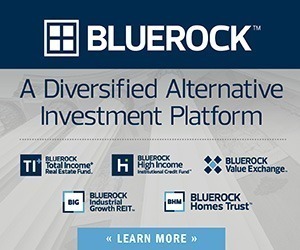In investing as in sports, a few people tend to focus on statistics while most don’t, but we all care about winning and losing. There are some numbers that reveal a lot about whether we’re winning or losing, and some numbers that only the “stats geeks,” or in the case of investing, the analysts, seem to care about or even understand.
Most investors in nontraded REITs correctly focus their attention on cash flows, or more specifically the cash distributions the REITs pay and whether they are sustainable. Unfortunately, the basic REIT financial statements prepared according to Generally Accepted Accounting Principles (GAAP) don’t provide sufficient information to answer the investor’s most basic questions about cash flow and distribution sustainability.
Nontraded REITs go through a life cycle of fundraising, portfolio construction, property management, and eventual liquidation. That life cycle, together with the unique characteristics of real estate accounting, means traditional accounting measures such as Net Income and earnings per share (EPS) can’t be relied upon to answer questions about distribution sustainability. As the industry evolved, companies recognized the shortcomings of GAAP in measuring cash flows available for distributions, and some REITs began reporting additional measures: funds from operations (FFO), modified funds from operations (MFFO), and adjusted funds from operations (AFFO). Initially, not all companies used the same definitions for these metrics, making apples-to-apples comparisons difficult. Finally, in 2010, IPA* issued guidelines for calculating MFFO to standardize its reporting. Today, most nontraded REITs report their MFFO consistent with those IPA guidelines.
Each of these measures adjusts GAAP Net Income to better approximate the cash flows that will be available to pay distributions to shareholders. The first adjustments add back depreciation (which is not a cash expense), as well as gains or losses from property sales and extraordinary items to arrive at FFO. But there are still many non-cash items within GAAP Net Income that require adjustments to better estimate funds available to pay distributions. These include such things as “straight-line rent” which GAAP requires to average escalating lease revenue over the life of the lease; amortization of above-market rents; impairments which are write-downs of asset values; gains or losses on securities and foreign exchange; and expenses related to acquisitions and dispositions which are not expected to recur. After all of these adjustments, which are defined by IPA, we arrive at MFFO. While not a perfect metric, MFFO gives investors a better idea of the cash flows being generated by a nontraded REIT that can, in the long run, be available for cash distributions.
When cash distributions exceed MFFO, they cannot be sustained. When MFFO exceeds cash distributions, the distributions can be sustained. The trends in MFFO are important. Over the life of the nontraded REIT, this number can make the difference between winning and losing.
*Investment Program Association.











